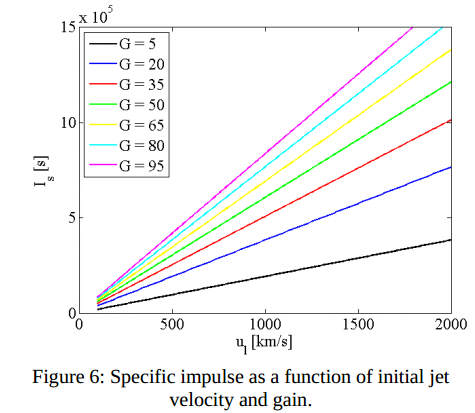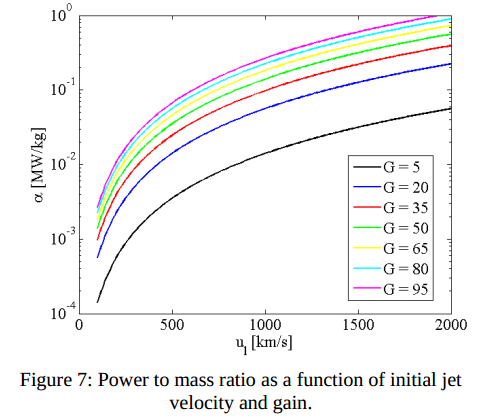| Online: | |
| Visits: | |
| Stories: |

| Story Views | |
| Now: | |
| Last Hour: | |
| Last 24 Hours: | |
| Total: | |
Plasma Jet Driven Magneto-Inertial Fusion is an Inertial Confinement Fusion (ICF)-Magnetic Confinement Fusion (MCF) hybrid approach
Human hopes of reaching stars other than the Sun are currently limited by the maturity of advanced propulsion technologies. One of the few candidate propulsion systems for providing interstellar flight capabilities is nuclear fusion. In the past many fusion propulsion concepts have been proposed and some of them even explored in high detail (Project Daedalus), however, as scientific progress in this field has advanced, new fusion concepts have emerged that merit evaluation as potential drivers for interstellar missions. Plasma jet driven Magneto-Inertial Fusion (PJMIF) is one of those concepts. PJMIF involves a salvo of converging plasma jets that form a uniform liner, which compresses a magnetized target to fusion conditions. It is an Inertial Confinement Fusion (ICF)-Magnetic Confinement Fusion (MCF) hybrid approach that has the potential for many benefits over both ICF and MCF, such as lower system mass and significantly lower cost.
PJMIF involves converging plasma jets that are launched from symmetrically distributed plasma rail-guns, so as jets come in, they merge and form a plasma liner that compresses the plasmoid target (spheromak or FRC), which reaches fusion conditions at peak compression.
The main advantage of PJMIF over classical ICF and MCF is that it does well in combining the best of both concepts, namely inertial compression and strong magnetic fields. Magnetic field is embedded in the target plasmoid, so when the target compresses, the magnetic flux increases inversely proportional to the radius of the target, taking magnetic field strength to MG levels.
The benefit of this mechanism is more efficiency, allowing PJMIF to operate at an intermediate parameter space, theoretically allowing fusion with gain at low input energies of 50 to 75 MJ.
For terrestrial purposes PJMIF the rail-guns would be distributed across a full sphere, however for propulsion purposes a parabolic nozzle has to be used in order to allow the exhaust jet to exit. The principle of such a fusion propulsion magnetic nozzle concept has been well described by several previous studies, so here we will only present the basic concepts. The nozzle consists several superconducting coils which create a specific magnetic field configuration inside the nozzle chamber.
Very high specific impulses and specific jet powers can be achieved with fairly low jet velocities of a few hundred km/s. These regimes of PJMIF propulsion represent a very minor technological extrapolation, while the performance would be sufficient for manned Solar system or precursor interstellar missions. However, if one needs extreme performance for interstellar flight, two options are available: increase in jet velocity to over 1000 km/s or significant improvement of fusion gain.
Source: http://nextbigfuture.com/2014/04/plasma-jet-driven-magneto-inertial.html





